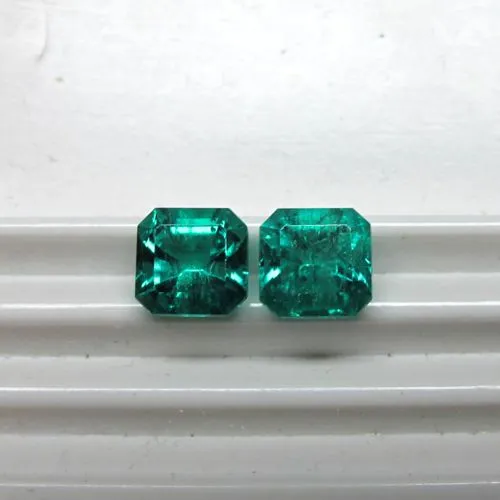I recently posted on Facebook photos of emeralds repairs including one matching set which had one emerald completely stripped of its oil during rhodium plating (see the Facebook post here). I showed the usual before and after photos which triggered a few questions about emeralds and oil.
I am sure you have seen natural emeralds and noticed they tend to have inclusions and fractures. These are marks of the conditions they experienced when the crystal formed deep in the Earth’s crust. Very often water or some form of liquid was around as well and became trapped inside the gem while it was crystallising. This minute amount of liquid can be released when the emerald is cut and the fractures reach the surface of a facet.
I don’t know when exactly the oiling process began but I can tell you it was a long time ago! The first cutters would have noticed the change in the appearance of those inclusions when “wet” as opposed to “dry” and went on researching the best way to make it look as it first did. Through research it was found that Cedar oil had a refractive index very close to emeralds. Basically that means this particular oil is not going to affect or change the natural characteristics of an emerald and simply replace the original fluid that was lost when cutting and minimise the appearance of fractures. Oil is stickier than water so it stays in the inclusions better, this is why I always recommend the utmost care when cleaning jewellery with emeralds.
Oiling of emeralds has been done for many generations and is an accepted treatment in the jewellery industry. Why it is accepted? Because it is non-invasive and does not change the overall character of the emerald. It can be removed safely without damage or any adverse effects to the natural gem.
Any other form of treatment has to be disclosed by the seller, that includes fracture-filled emeralds (with some sort of resin), dyes or coloured oils to enhance the colour of the emerald… Synthetic emeralds are normally displayed as “Biron emeralds” or “Chatham emeralds” to refer to the manufacturing process that created them (the 2 most common synthetic emeralds available).

This pair of emeralds were matching before the one on the right got stripped of its oil.

The same pair of emeralds after oiling, you can see how much improved the emerald on the right-hand side is after treatment.
This is a very brief explanation about emeralds and oiling, there are entire books written on emeralds… If you have any other questions or comments please use the comment box below.
